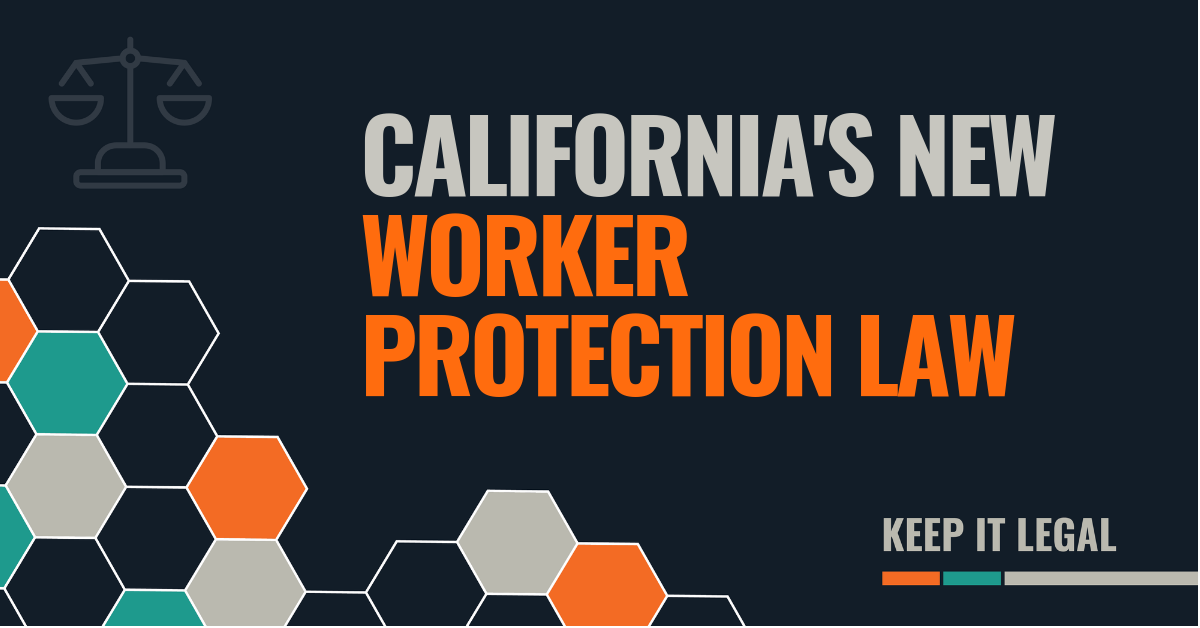On September 18, 2019, California Governor Gavin Newsom signed into law AB5, which is intended to redefine who is classified as an employee while working in the state.
AB5 expands on and codifies the California Supreme Court’s 2018 ruling in Dynamex Operations West, Inc. v. Superior Court, which I wrote about in this blog post: Big Change in California Independent Contractor – Employee Law. It’s being written about as a law that applies primarily to gig economy “companies such as Uber and Lyft“, but the impact of AB5 will likely go far beyond Uber drivers.
The full text of AB5 can be found here.
What Is AB5 About?
The key question here is whether someone who performs work should be classified by the state as an employee or an independent contractor. It’s important to know that this new law applies even if both parties (the employer and the worker) want the worker to be classified as an independent contractor. It doesn’t matter if the employer and the worker prepare the most ironclad, carefully written Independent Contractor Agreement and sign it in blood on the steps of the State Capitol. Unless the conditions found in AB5 are satisfied, that worker is an employee, for better or worse.
What’s the Difference Between an Employee and an Independent Contractor?
What’s the difference? A lot. When someone is classified as an employee, the business must pay payroll taxes. The employee may be entitled to paid family leave, unemployment, paid sick leave, and workers’ compensation.
Those claims could be pursued individually or on behalf of a group. The employee (or employees) can go after the business, as can the state as well as city governments. So, again, even if the company’s workers want to be treated as independent contractors, the city or state could bring claims against the company in spite of those wishes.
What’s the ABC Test?
AB5 puts into black and white the “ABC” test found in the Dynamex ruling. From the Legislative Counsel’s Digest which is attached to the bill itself:
The bill would provide that for purposes of the provisions of the Labor Code, the Unemployment Insurance Code, and the wage orders of the Industrial Welfare Commission, a person providing labor or services for remuneration shall be considered an employee rather than an independent contractor unless the hiring entity demonstrates that the person is free from the control and direction of the hiring entity in connection with the performance of the work, the person performs work that is outside the usual course of the hiring entity’s business, and the person is customarily engaged in an independently established trade, occupation, or business.
This, again, is what’s called the “ABC” test:
A. The hiring entity has to demonstrate that the worker is free from the control and direction of the hiring entity in connection with the performance of the work;
B. The worker has to perform work that is outside the usual course of the hiring entity’s business;
C. The worker must be customarily engaged in an independently established trade, occupation, or business.
Unless all three of these conditions are satisfied, the worker is to be considered an employee, not an independent contractor.
However, there are quite a few exceptions to this rule as found in AB5. Quoting again from the Legislative Counsel’s Digest:
These exempt occupations would include, among others, licensed insurance agents, certain licensed health care professionals, registered securities broker-dealers or investment advisers, direct sales salespersons, real estate licensees, commercial fishermen, workers providing licensed barber or cosmetology services, and others performing work under a contract for professional services, with another business entity, or pursuant to a subcontract in the construction industry.
Lawyers are exempted too, thank you very much.
Even if a worker meets one of the exceptions, that doesn’t mean they are definitely not an employee. In those situations, the worker’s employment status would be evaluated under the older, more lenient standard found in S. G. Borello & Sons, Inc. v. Department of Industrial Relations (the so-called Borello test).
The full list of exceptions can be found in the text of AB5 which is linked above (but hey, I’ll do you a favor and link it again here).
And of course the future of AB5 is still not perfectly clear. Uber, for example, has stated that AB5 doesn’t actually apply to their drivers, and they have pledged $30 million to a ballot measure to overturn AB5. There will certainly be no shortage of lawsuits challenging when, how, to whom, and whether AB5 applies. Watch this space for updates.
In the meantime, however, employers and workers are encouraged to carefully review their agreements and to consult with a lawyer if there are any questions about the application of AB5 to their businesses.


